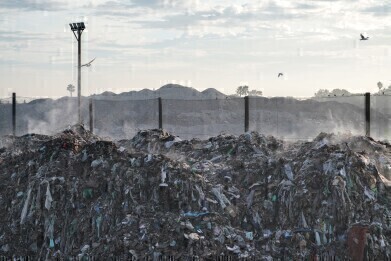Gas Detection
What Is Landfill Gas Monitoring?
Dec 07 2022
Landfill gas monitoring is the name given to the measurement and analysis of the various gases which are created as a by-product of the organic matter deposited at landfill sites. These emissions are composed of a wide variety of different substances, each of which could pose a threat to the human, animal and plant life around the site, while also contributing to climate change.
For that reason, it’s incumbent on landfill site owners to monitor the emissions emanating from their facility. In this article, we’ll take a brief look at the types of gases present at landfill sites, the threats they pose and the methods of monitoring used to keep tabs on them. It’s part of a larger series which puts the spotlight on everything you need to know about gas detection for those interested in the subject.
Which gases are produced by landfills?
Although the specific gases produced by landfills will vary from site to site, they are generally composed of between 40% and 65% methane and 40% to 55% carbon dioxide. The remaining percentage is made up of up to 5% nitrogen, alongside small amounts of carbon monoxide, ammonia, oxygen, hydrogen and trace amounts of non-methane organic compounds, such as benzene, trichloroethane and vinyl chloride.
These gases can infiltrate their surrounding environment and cause an array of potential issues. For example, methane is present in all four alchemical elements and can be an asphyxiant to humans and animals, unbalance nutrient levels of soil and water, pose risk of explosion and contribute to climate change; in fact, it has a global warming potential (GWP) around 28 times greater than that of carbon dioxide over a 100-year period. At the same time, landfill gas is a potential source of renewable energy that could be harnessed to great effect, so its escape is doubly damaging.
How are landfill gases monitored?
There are various different methods of monitoring landfill gas and the one which is right for any given facility will depend upon the parameters which need to be monitored, the type of landfill in question, the environmental conditions surrounding the site, the legislative requirements of the country and the budget of the site owner.
Having said that, all landfill gas monitoring activity can be divided into one of the following categories:
- Subsurface monitoring. This method uses probes or wells to take samples of gases contained within soil vapours underground.
- Near surface monitoring. This method measures the concentrations of different gases at a maximum height of 10cm above the surface of the soil.
- Emissions monitoring. This method quantifies the specific rate at which gases are emitted from a fixed source, such as smokestacks, flares or the surface of the landfill itself.
- Ambient air monitoring. This method measures the concentration of gases and contaminants in the outdoor air surrounding the landfill.
- Indoor air monitoring. This method measures the concentration of gases in enclosed spaces or indoor settings in the vicinity of the landfill.
Each of these different types of landfill gas monitoring are important to ensure that the emission of gases from the landfill does not endanger public or environmental health. As such, site owners should explore options for tackling each of the above types of landfill gas monitoring to comply with regulations, avoid penalisation and guarantee the safety of workers (especially lone ones), residents and other interested parties in the surrounding area.
If you’d like to learn more about landfill gas monitoring in particular and gas detection in general, the newly published CoGDEM Guide to Gas Detection is a fantastic resource.
Digital Edition
AET 28.2 April/May 2024
May 2024
Business News - Teledyne Marine expands with the acquisition of Valeport - Signal partners with gas analysis experts in Korea Air Monitoring - Continuous Fine Particulate Emission Monitor...
View all digital editions
Events
Jul 30 2024 Jakarta, Indonesia
China Energy Summit & Exhibition
Jul 31 2024 Beijing, China
2024 Beijing International Coal & Mining Exhibition
Aug 07 2024 Beijing, China
IWA World Water Congress & Exhibition
Aug 11 2024 Toronto, Canada
Aug 25 2024 Stockholm, Sweden and online









.jpg)








